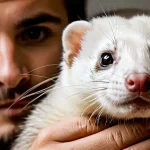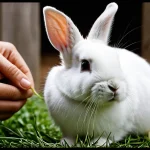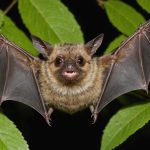Defining the Uniqueness of Cats in the UK
Cats possess a range of unique cat traits that distinguish them clearly from other UK animals. Unlike dogs, which often seek constant human interaction, cats exhibit a blend of independence and affection. This balance results in distinct characteristics of cats, such as their keen hunting skills combined with a territorial nature. The ability of cats to adapt to both urban and rural environments without losing their instinctual behaviors is another hallmark.
Compared to wildlife like foxes or rabbits, cats display solitary and stealthy behaviors, rarely venturing into group dynamics typical for many other UK animals. Birds, meanwhile, rely heavily on flight and foraging strategies, whereas cats depend on sharp senses to stalk and pounce, demonstrating their unique predatory skills.
Also read : How Can Cats Adapt to Changing Environments in the UK?
The contrast between cats and other domestic or wild species highlights their versatility and resilience. Their presence in homes and natural surroundings alike underlines their uncommon position in the UK animal landscape. Understanding these unique cat traits helps explain why cats maintain such a strong cultural and ecological role across the UK.
Physical Traits Distinctive to Cats
Cats possess unique physical characteristics that set them apart from many animals in the UK. Their flexible bodies and retractable claws enable remarkable agility, allowing them to climb, jump, and hunt with finesse. Unlike many UK animals whose claws are permanently extended, a cat’s claws can be drawn back to avoid wear and maintain sharpness.
This might interest you : Unraveling feline aggression: a guide to identifying and managing cat hostility towards humans and other animals
Another distinctive feature is their exceptional night vision. Cats have a higher number of rod cells in their eyes, enhancing their ability to see in low light. This suits their crepuscular nature, active primarily during dawn and dusk. Their sensitive whiskers further complement their sensory awareness. These tactile hairs detect changes in the environment, helping cats navigate narrow spaces and sense nearby objects or prey.
Body size and coat variations among cats are considerable. Domestic cats typically weigh between 4 to 5 kilograms, but this varies widely with breed and diet. Their grooming habits also stand out; cats meticulously clean themselves, employing rough tongues that remove dirt and loose fur. Compared to other UK animals, such as dogs or rabbits, cats invest more time daily in grooming, supporting both health and social bonding.
These distinctive traits highlight the cat’s evolutionary adaptation as a solitary predator highly tuned to its environment.
Independent Nature and Social Behaviors
Understanding the balance between autonomy and interaction
Cats are often celebrated for their independence in cats, contrasting sharply with social pack animals such as dogs. Unlike dogs, which thrive on group dynamics, cats exhibit a more solitary social structure. This difference roots in their evolutionary behavior as territorial hunters, commonly engaging in solitary hunting to secure food.
Their cat behavior reveals a nuanced balance: while they are capable of living autonomously, cats do form social bonds, but typically on their own terms. Interaction with humans can range from affectionate companionship to brief engagement, highlighting their selective nature. Unlike many UK pet comparisons where dogs seek continuous social input, cats value personal space and frequently assert control over when and how they engage with humans or other animals.
Territorial instincts also play a prominent role. Cats establish clear boundaries around their environment, which they defend, thereby minimizing conflicts. This is crucial in multi-cat households or urban settings where territory overlaps. Therefore, their independence should not be mistaken for aloofness but rather an adaptive strategy aligned with their social structure and survival needs.
Understanding this duality helps pet owners appreciate why cats may resist constant attention yet still cherish meaningful connections.
Hunting Instinct and Role as Predators
The cat hunting instinct is deeply ingrained and remarkably effective compared to many other domestic animals. Unlike dogs or rabbits, cats exhibit predator behavior that is not only instinctual but finely tuned. This makes their natural hunting skills exceptional; where dogs might rely more on social cues and rabbits focus on foraging, cats actively stalk, pounce, and kill prey with precision.
In the UK, this predator behavior plays a significant ecological role. Cats often hunt small mammals and birds, impacting local wildlife populations. While some view this as a contributor to controlling rodent populations—a natural form of pest management—it also raises concerns about the decline of native wildlife, including certain bird species.
The difference between cats and animals like rabbits and birds is clear: cats are predators, relying on stealth and speed, whereas rabbits and birds are primarily foragers or prey species, focusing on gathering food or evading predators. This contrast highlights the unique position cats hold within the domestic animal hierarchy and their influence on the ecosystems where they roam. Their hunting instinct, combined with their adaptability, cements their role not just as pets but as active participants in local food chains.
Sensory Abilities That Set Cats Apart
Cats boast extraordinary sensory abilities that distinguish them from many other UK animals. Their senses of hearing, smell, and sight are finely tuned for their predatory lifestyle. Cats can detect ultrasonic sounds up to 64 kHz, far beyond the human range, enabling them to hear the faintest movements of rodents. Their keen sense of smell also aids in hunting and identifying territory, with about 14 times more scent receptors than humans.
A unique feature of cats is their whiskers, or vibrissae. These specialized tactile hairs provide spatial awareness by detecting subtle changes in airflow and surroundings, helping cats navigate narrow spaces and sense the proximity of objects, even in darkness. This ability is unmatched by many other UK mammals.
Unlike dogs, which primarily rely on their superb sense of smell, or birds with acute vision for flight and foraging, cats balance sharp vision with stealthy hearing and touch. Their eyes excel in low light, thanks to a reflective layer called the tapetum lucidum that enhances night vision.
By combining these superior senses with expressive body language, cats communicate not only with each other but also interpret their environment finely, giving them an edge within the UK’s diverse animal kingdom.
Communication Styles in Cats Versus Other Animals
Cats possess a unique cat communication style that sets them apart from many other UK animals. Their vocalisations include distinct sounds like purring and meowing, each serving different emotional and social functions. For instance, purring often signals contentment or self-soothing, while meowing is primarily a way to communicate with humans rather than other cats. This contrasts with the louder, more direct barks and growls typically used in dog communication.
In addition to vocalisations, cats rely heavily on subtle body language and scent marking. Tail position, ear orientation, and slow blinking are all nuanced ways cats express moods or intentions. Scent marking through rubbing or scratching also plays a crucial role in territory establishment and social interaction, showcasing a more indirect form of communication compared to many other mammals.
When compared to other UK animals, cats’ communication style may appear more reserved or cryptic. Dogs, for example, tend to use more overt signals, such as barking or tail wagging, which makes their intentions clearer at first glance. Understanding these differences highlights the importance of interpreting feline cues carefully to build a stronger bond with cats.
History of Domestication and Cultural Significance in the UK
Cats have a distinct place in the UK pets history, with their domestication tracing back several centuries. Unlike dogs, whose domestication focused on working roles like hunting and guarding, cats were primarily valued for their ability to control pests. This practical role allowed cats to integrate into households gradually, marking a more subtle cat domestication process compared to the more intentional breeding seen in dogs.
Historical records suggest cats arrived in the UK with Romans around 2,000 years ago, spreading through rural and urban areas mostly as pest controllers. Over time, cats moved from a simple utility role to more complex social symbols in UK culture. Unlike dogs, cats were often linked with mysticism and superstition. For example, black cats have been both revered and feared in various cats in UK culture stories, reflecting changing attitudes.
Cats also feature prominently in British folklore. Tales of cats protecting homes and bringing good fortune contrast with superstitions about witches’ familiars, showcasing how UK culture embraces dual roles of cats—as both protectors and mysterious beings. This multifaceted cultural significance differentiates cats from other domesticated animals, making them uniquely woven into the UK’s historical tapestry.
How Robot Hoovers Navigate and Clean Your Home Efficiently
Small and smart, robot hoovers rely on advanced technology to clean your floors with precision. Most modern models use sensors and mapping systems to understand the layout of your home. These sensors detect obstacles like furniture and stairs, preventing collisions and falls.
When you ask, “How does a robot hoover know where to clean?” it’s all about mapping. Many robot hoovers scan the room to create a digital map, then plan the most effective cleaning route. This ensures thorough coverage without missing spots or repeatedly cleaning the same area.
Precision is further enhanced by sensors that can identify different floor types, such as carpet or hardwood, adjusting cleaning power accordingly. This also improves efficiency because the robot doesn’t waste energy or time.
Moreover, robot hoovers follow a logical pattern rather than random movement, which conserves battery life and maximizes cleaning time. Users looking for a hands-off experience will appreciate this smart technology, providing reliable and consistent cleaning performance.
The combination of sensors, mapping, and adaptive cleaning makes robot hoovers a compelling solution. For those seeking an effortless way to maintain clean floors, these devices offer both convenience and efficiency, making cleaning less of a chore.



